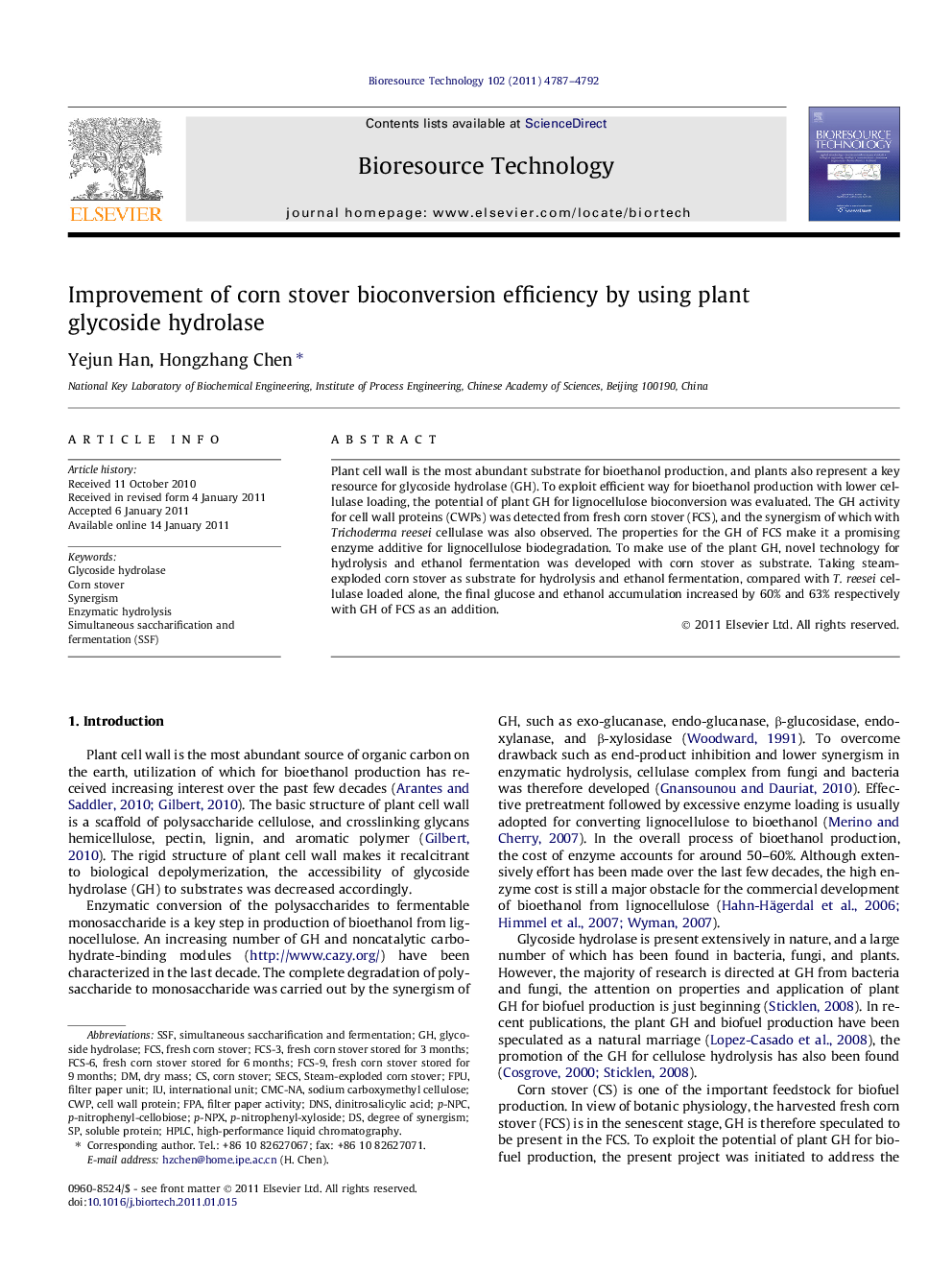| Article ID | Journal | Published Year | Pages | File Type |
|---|---|---|---|---|
| 10395195 | Bioresource Technology | 2011 | 6 Pages |
Abstract
Plant cell wall is the most abundant substrate for bioethanol production, and plants also represent a key resource for glycoside hydrolase (GH). To exploit efficient way for bioethanol production with lower cellulase loading, the potential of plant GH for lignocellulose bioconversion was evaluated. The GH activity for cell wall proteins (CWPs) was detected from fresh corn stover (FCS), and the synergism of which with Trichoderma reesei cellulase was also observed. The properties for the GH of FCS make it a promising enzyme additive for lignocellulose biodegradation. To make use of the plant GH, novel technology for hydrolysis and ethanol fermentation was developed with corn stover as substrate. Taking steam-exploded corn stover as substrate for hydrolysis and ethanol fermentation, compared with T. reesei cellulase loaded alone, the final glucose and ethanol accumulation increased by 60% and 63% respectively with GH of FCS as an addition.
Keywords
p-NPCDNSSSFFPUCWPSECSFCSCMC-NaFpAdry massDinitrosalicylic ACIDSimultaneous saccharification and fermentation (SSF)Filter paper activitySynergismEnzymatic hydrolysisinternational unitfilter paper unitsimultaneous saccharification and fermentationcell wall proteinSoluble proteinCorn stoversodium carboxymethyl cellulosehigh-performance liquid chromatographyHPLCglycoside hydrolase
Related Topics
Physical Sciences and Engineering
Chemical Engineering
Process Chemistry and Technology
Authors
Yejun Han, Hongzhang Chen,
